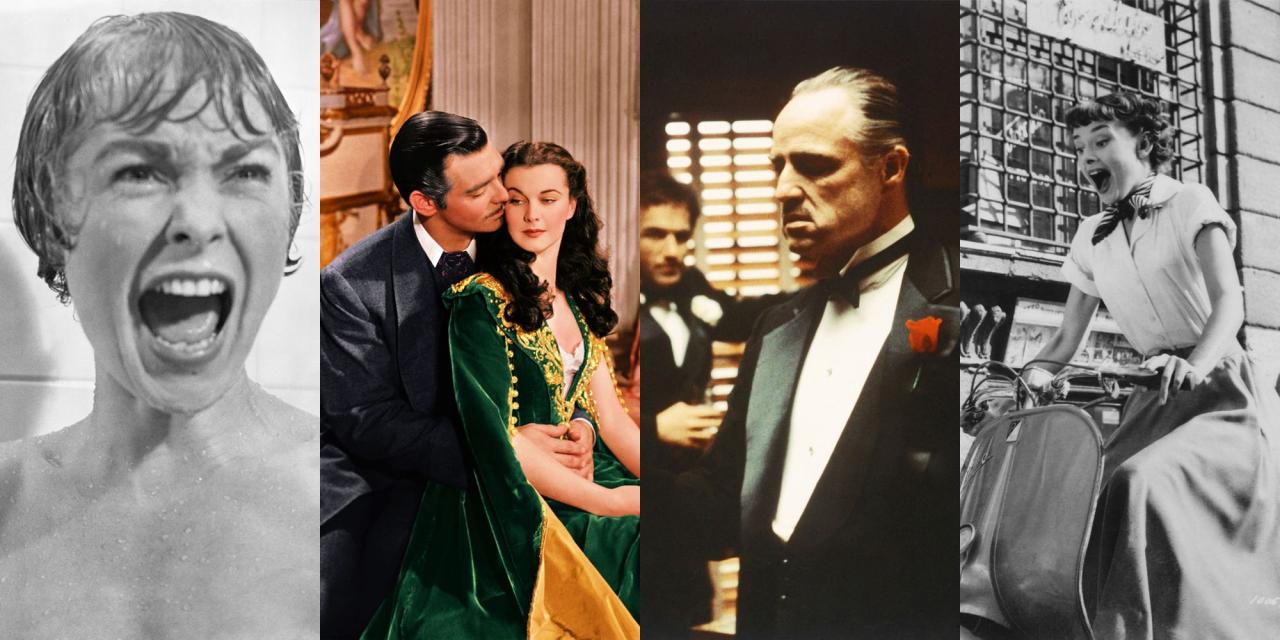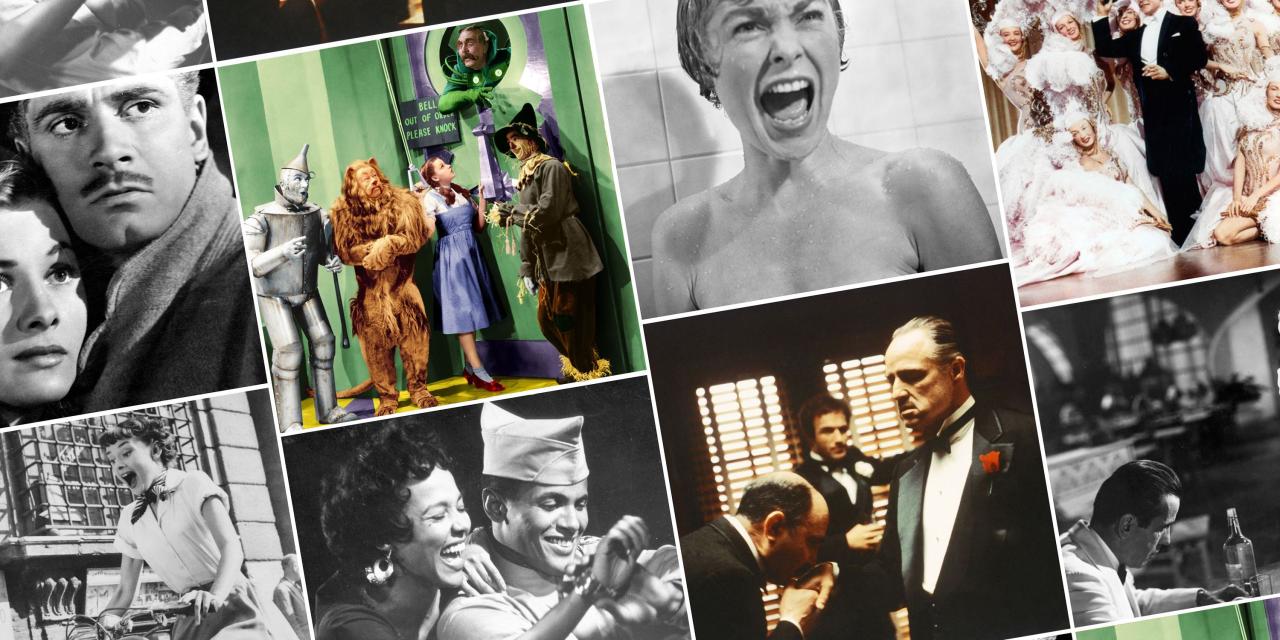Iconic 21+ Movie Classics delve into the enduring appeal of mature-themed films that have left an indelible mark on cinema. These films, transcending mere entertainment, reflect societal shifts, explore complex themes, and showcase exceptional filmmaking. We’ll examine what constitutes an “iconic” film, exploring the cultural impact and genre representation within this compelling category.
This exploration will analyze the defining characteristics that elevate certain films to iconic status, considering factors such as critical acclaim, cultural influence, and lasting impact on subsequent cinematic works. We will also investigate the prevalence of specific genres within this selection, examining the reasons for their enduring popularity and comparing their thematic resonance.
Defining “Iconic”

Defining a film as “iconic” goes beyond simple popularity; it requires a lasting cultural impact that transcends its initial release. An iconic film resonates deeply with audiences across generations, influencing subsequent films, art, fashion, and even language. Its themes, characters, and imagery become ingrained in the collective consciousness, frequently referenced and reinterpreted in various media.
The criteria for iconic status are multifaceted and somewhat subjective, but generally include significant critical acclaim, widespread commercial success, and a demonstrable influence on popular culture. A film’s impact isn’t solely measured by box office numbers; its ability to spark conversations, inspire imitations, and generate lasting cultural memes is equally crucial. This cultural impact often manifests in the film’s enduring relevance to contemporary society, with its themes continuing to resonate with audiences long after its release.
Cultural Impact of Iconic Films
The cultural impact of an iconic film can be profound and far-reaching. Consider the impact of *Casablanca* (1942). Its romantic narrative, memorable dialogue (“Here’s looking at you, kid”), and evocative portrayal of wartime romance continue to be referenced in popular culture. The film’s enduring popularity isn’t just nostalgic; its themes of sacrifice, love, and duty remain relevant to modern audiences. Similarly, *Citizen Kane* (1941) revolutionized filmmaking techniques and storytelling, influencing generations of directors and filmmakers with its innovative narrative structure and groundbreaking cinematography. Its innovative use of deep focus and non-linear storytelling continues to inspire film students and professionals alike. The film’s exploration of power, ambition, and the elusive nature of truth remains intellectually stimulating.
Examples of Iconic Films, Iconic 21+ Movie Classics
Several films exemplify these criteria. *The Godfather* (1972) profoundly impacted the gangster genre, its portrayal of family dynamics and power struggles becoming a cultural touchstone. The film’s iconic imagery, memorable score, and unforgettable performances continue to resonate with audiences. Its influence extends beyond cinema, permeating popular culture with its imagery and themes. Similarly, *Star Wars: Episode IV – A New Hope* (1977) revolutionized science fiction cinema, spawning a vast and enduring franchise that continues to captivate audiences worldwide. Its impact extends far beyond the box office; its characters, themes, and technology have profoundly shaped science fiction and popular culture. The film’s influence on special effects, costume design, and storytelling techniques remains undeniable. Finally, *The Wizard of Oz* (1939) remains a beloved classic, its whimsical story and iconic imagery continuing to enchant audiences across generations. The film’s impact is evident in its enduring popularity, its frequent television broadcasts, and its pervasive influence on popular culture, including its visual style and musical numbers.
Genre Representation: Iconic 21+ Movie Classics
The category of “Iconic 21+ Movie Classics” showcases a diverse range of genres, yet certain types consistently dominate the list of films considered timeless and influential. Understanding the prevalence of these genres requires examining not only their inherent appeal but also the socio-cultural contexts in which they emerged and resonated with audiences.
The popularity of specific genres within this category reflects broader societal trends and artistic innovations. Certain genres have endured due to their capacity to explore universal themes and emotions in compelling ways, while others benefited from technological advancements that allowed for more sophisticated storytelling and visual effects. This interplay between artistic expression and audience reception is crucial to understanding the lasting impact of these films.
Genre Prevalence and Popularity
Analysis of iconic 21+ movie classics reveals a clear dominance of certain genres. Crime dramas, often featuring complex characters navigating moral ambiguities, consistently appear. Romantic dramas, exploring the complexities of love and relationships, also hold a prominent position. Similarly, science fiction and fantasy films, pushing the boundaries of imagination and exploring philosophical questions, frequently earn iconic status. The enduring appeal of these genres stems from their ability to address fundamental human experiences—crime’s exploration of justice and morality, romance’s examination of connection and loss, and science fiction’s contemplation of humanity’s place in the universe. The enduring power of these themes ensures their continued relevance across generations.
Thematic Comparisons Across Genres
While distinct in their settings and approaches, the genres prevalent in iconic 21+ movie classics often share underlying thematic concerns. For example, crime dramas and thrillers frequently explore themes of justice, morality, and the consequences of choices, mirroring similar explorations in war films or historical epics, albeit within different contexts. Romantic dramas, while focused on interpersonal relationships, often intersect with themes of sacrifice, self-discovery, and societal pressures, which also resonate within other genres like coming-of-age stories or period pieces. The exploration of human nature, regardless of genre, appears to be a unifying thread across these films. Consider, for instance, the moral dilemmas faced by characters in *Casablanca* (romantic drama/war film) compared to those in *The Godfather* (crime drama). Both films explore themes of loyalty, sacrifice, and the complexities of human behavior, demonstrating a thematic overlap despite their different genre classifications.
Closing Summary

Ultimately, the exploration of Iconic 21+ Movie Classics reveals not only the artistry and technical brilliance of these films but also their profound reflection of the human experience. These films, through their compelling narratives and unforgettable characters, continue to resonate with audiences, cementing their place in cinematic history. Their enduring appeal speaks to the power of storytelling and the lasting impact of great filmmaking.





